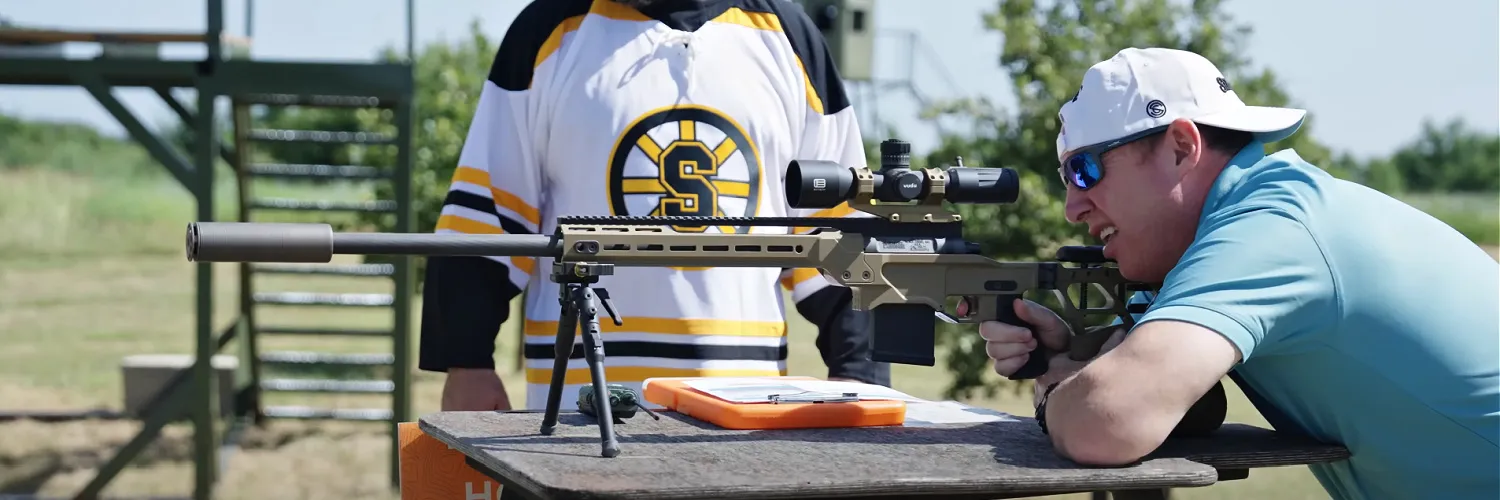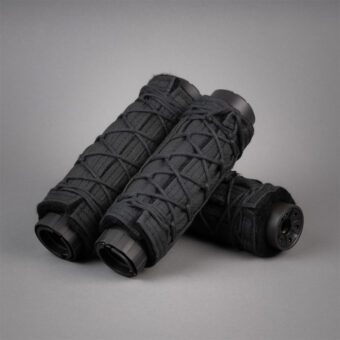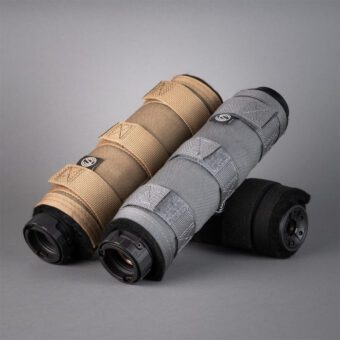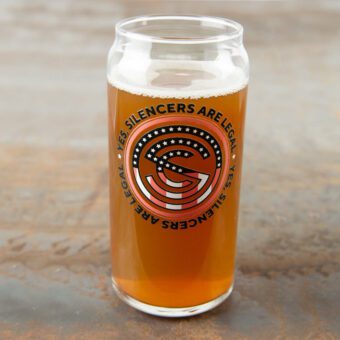Hiram Percy Maxim
William Lawson
Hiram Percy Maxim ranks among the greatest inventors and technology advocates of the late 19th and early 20th century.
Graduating from the Massachusetts Institute of Technology (MIT) at age 17, Maxim created or led advancements in electricity, automobiles, aviation, radio, and sound suppression. Among his many interests, Maxim’s greatest enthusiasm was reserved for amateur radio, and his influence is still felt today.
But Maxim is best remembered for inventing the Maxim Silencer, the first commercially successful firearm suppressor.

Despite his genius, Maxim was heavily influenced by his father, Sir Hiram Maxim, who was his son’s equal as an inventor. Let’s look briefly at the elder Maxim, who is also best known for inventing a particular firearm, the Maxim machine gun.
Who is Hiram Maxim?
Hiram Maxim was born in Maine in 1840. He began work at age 14, moving to his uncle’s Fitchburg, Massachusetts machine works at 24. His natural ability led to his being an instrument maker and draftsman.
Maxim invented a menthol inhaler for bronchitis sufferers, a curling iron, and coffee substitutes, among many other things. He also built steam, oil, and gasoline powered engines, and a powered flying machine that may have beaten the Wright Brothers to the air had he pursued its further development
Sir Hiram Maxim and the Maxim Gun
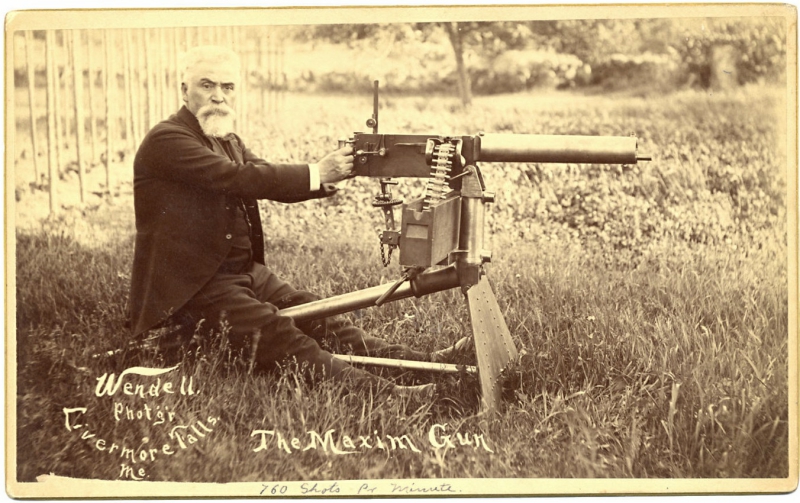
The Maxim machine gun, patented in 1885, was Hiram Maxim’s most famous invention. Maxim had moved to London in 1881, representing the United States Electric Lighting Company. He became a naturalized British citizen in 1899.
During an 1882 visit to Vienna, Austria, an American acquaintance offered Maxim some advice: “Hang your chemistry and electricity,” the man said. “If you want to make a pile of money, invent something that will enable these Europeans to cut each other’s throats with greater facility.”
Maxim followed the man’s advice, producing the first operational machine gun a few years later. Maxim was inspired to use the gun’s gas discharge to power the action, allowing automatic fire. His idea came from an incident when a rifle’s recoil knocked him down as a boy. Maxim harnessed that energy to operate his machine gun.
The Maxim gun is one of history’s most reliable firearms, and many of its variants remain in service today.
When Did Hiram Maxim Die?
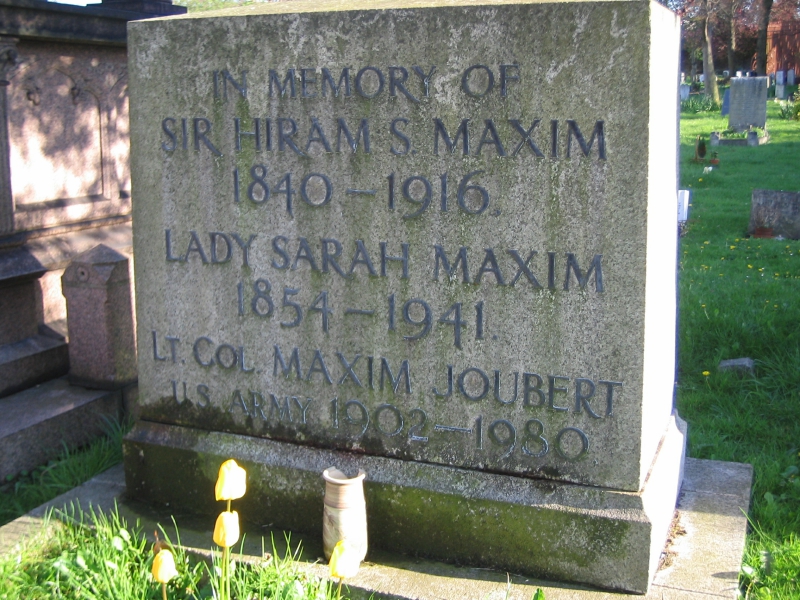
Maxim worked until his health failed, passing away on November 24, 1916, at age 76. He was a Fellow of the Royal Institution, a Fellow of the Royal Society of Arts, and a Chevalier of the French Legion of Honor, in addition to his knighthood. Sir Hiram Maxim is buried in London’s West Norwood Cemetery.
In his lifetime, Britain’s Queen Victoria knighted Hiram Maxim in 1901 for his contributions to science. His machine gun evolved into the Vickers machine gun, as British industrialist Edward Vickers’ company financed Maxim’s research and bought the gun’s manufacturing rights. Maxim joined the company but left for other pursuits, namely aviation, in 1911.
Maxim held 122 US and 149 British patents during his life. He claimed to have invented the incandescent light bulb, saying that Thomas Edison manipulated US patent law to cheat him of his design.
Hiram Percy Maxim and the Silencer
Hiram Percy Maxim inherited his father’s engineering talents and insatiable curiosity. He worked for electric companies after his graduation from MIT but was soon drawn to the nascent automobile industry.
Maxim believed gasoline-powered cars were the future and was building his own internal combustion engine by 1892, at age 22. Maxim’s updated engine powered the winning car at the first American closed-circuit auto race in 1899.
He drove the car himself. But the inventor disliked the engine’s unpleasant noise and exhaust, leading to his looking for ways to suppress them.
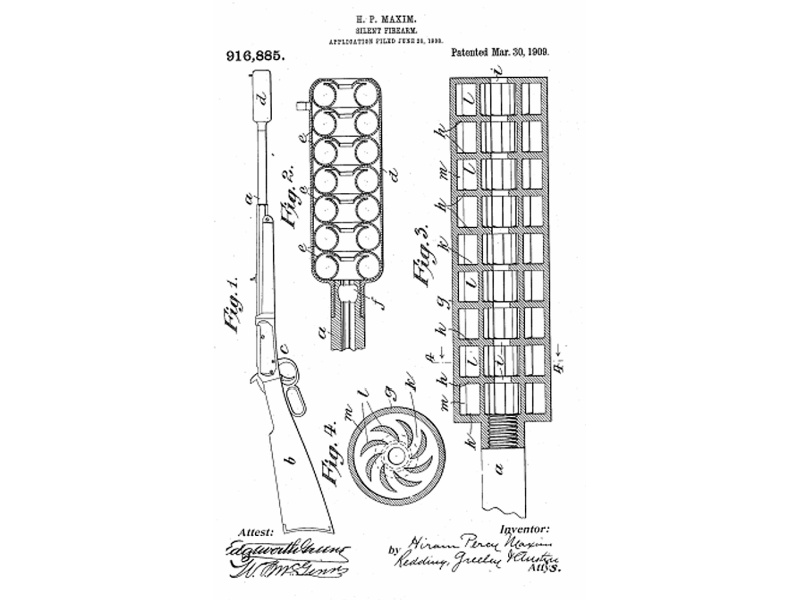
Maxim’s work increasingly focused on sound suppression, leading to his invention of automobile muffler systems, which redirected and slowed down the car’s exhaust, reducing noise and fumes. Modern mufflers are direct descendants of Maxim’s work.
Thanks to his father, Hiram Percy Maxim understood how guns worked, and his idea for the Maxim Silencer came while taking a bath. Watching the water form a vortex as it drained from the tub, Maxim wondered whether the gas escaping from a firearm’s muzzle could be redirected through a series of vortices to slow it down, thus reducing the noise. The idea wasn’t so different from his car muffler designs.
Maxim patented the Maxim Silencer in 1909. The design reduced sound by forcing muzzle gases through a series of curved vanes. Like the water in Maxim’s bathtub, the vanes spun the gases into small vortices, reducing their pressure as they cooled. Reduced pressure meant reduced noise.
While effective, Maxim’s design was expensive to manufacture and the silencer itself heated up quickly. Modern baffle designs are more efficient and less expensive.
The original Maxim Silencer was designed for rifles only. The pistols of the day would not function properly with the Silencer.
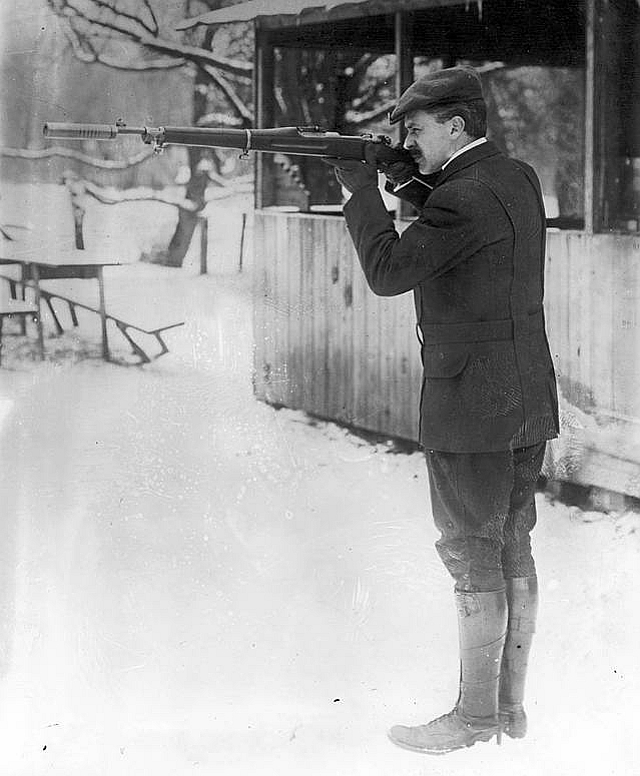
Hiram Percy Maxim understood firearms and shooting, so his Silencer was off-center, with the vane system below the muzzle’s level. He did that so the Silencer wouldn’t interfere with the gun’s sights. That was an important feature in a time when sights weren’t so easily changed.
Silencerco’s Osprey series mimics that feature while providing modern internal design and manufacturing standards.
Why Did Hiram Percy Maxim Call it a “Silencer?”
The Maxim Silent Firearms Company of Hartford, Connecticut published an informational brochure to educate the public about the Silencer and how it worked. The brochure was titled Maxim Silencer. It Will Pay You to Know About It.
The brochure’s first sentence reads, “The Silencer checks the muzzle blast. Instead of the powder gases being liberated into the air instantaneously when the bullet emerges from the muzzle, as in the ordinary gun, the gases are caught by the Silencer.”

A scientist of Maxim’s caliber would have used very precise descriptors for his product. He wouldn’t choose the name “Silencer,” with all its implications, lightly. The brochure reveals Maxim’s careful language in the section titled How Much It Reduces Noise. “The Silencer absolutely annuls all of the noise of the report, as can easily be understood from its construction.”
Hiram Percy Maxim goes on to explain why a rifle equipped with his Silencer will still be quite audible: “The only noise the Silencer does not control is the noise made out in the air beyond the gun by a high-velocity bullet in its flight. This noise is a ‘crack’ like the crack of a whip and not a ‘whistle’ or a ‘shriek’ as is commonly supposed. The noise is made in the wake of the bullet and is caused by the same thing that causes the air to crack when a whiplash is snapped.”
In case you missed it, Maxim just described a sonic boom before anyone knew the effects of breaking the sound barrier.
Maxim continues, writing that, “This noise cannot be avoided when the bullet velocity is high, no matter how quiet we make the gun.” So, Maxim carefully differentiated between the noise caused by muzzle gases and noise caused by high-velocity bullets breaking the sound barrier.
He further demonstrated his understanding of sonic concepts by introducing a line of subsonic ammunition to allow even quieter shooting.
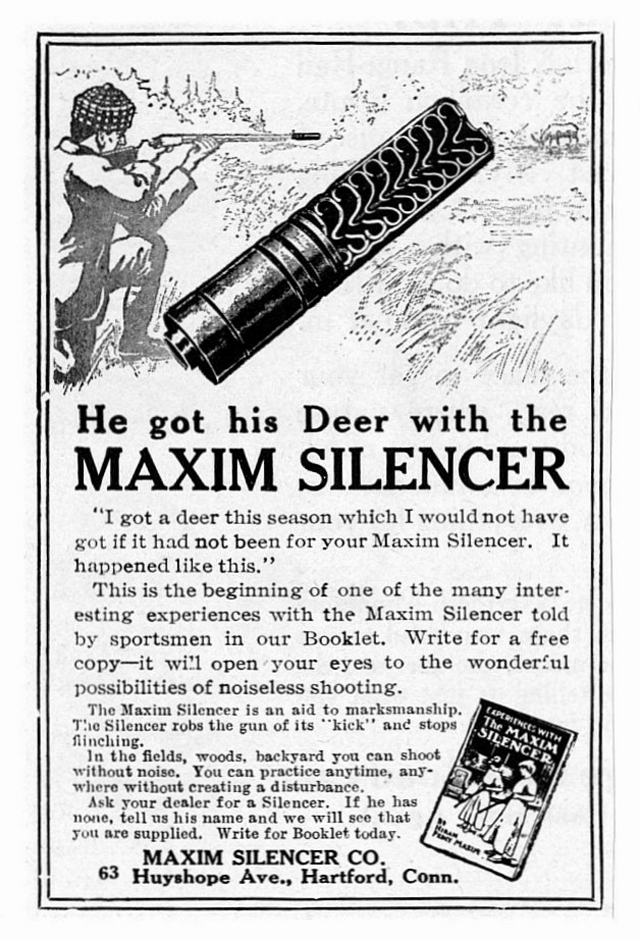
Maxim’s thorough understanding of how his invention worked, and how it didn’t, lends credibility to the product’s name. That credibility is reinforced by the fact that it was designed for and used on rifles with non-reciprocating actions, like bolt actions and lever actions. We begin to see that Maxim’s claims have some validity.
Maxim’s brochure also explains how the Silencer uses muzzle gases to reduce recoil by two-thirds.
An American Genius
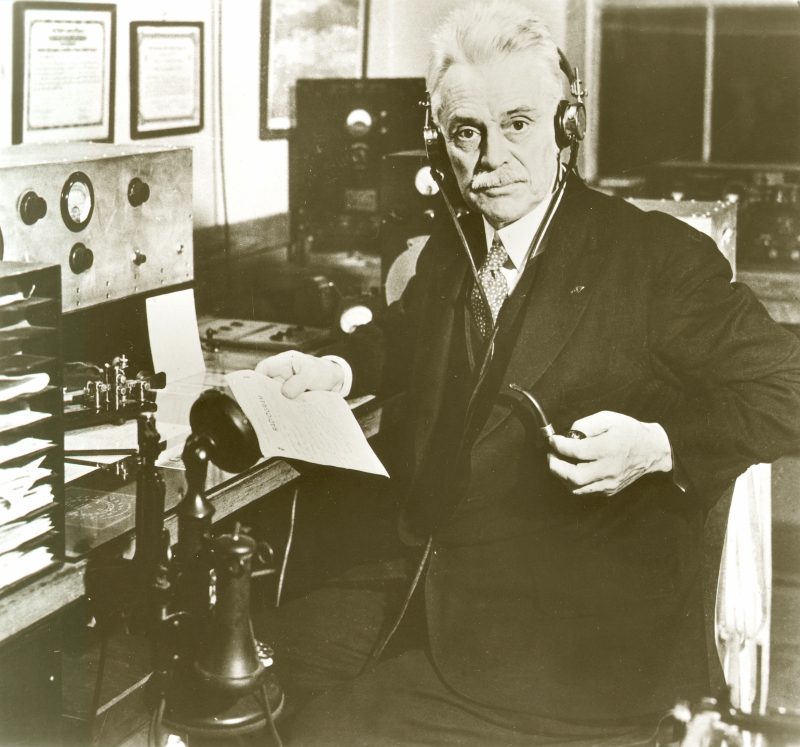
Hiram Percy Maxim was a genius. But he was the rare genius who understood how to properly apply his ideas.
Maxim transformed three industries: automobiles, firearms, and radio. He also influenced many others. The 1934 National Firearms Act crippled the Maxim Silencer Company, but his work on car mufflers and radio communications is still felt today. His muffler technology carried over to air compressors, air conditioners, and any other modern machine that uses a sound muffler.
He also established the American Radio Relay League in 1914 to promote long range radio communications. The League still exists today and is the national membership organization for amateur radio operators. Its headquarters station is called the Hiram Percy Maxim memorial Station. Maxim’s personal radio transmitter, which he called “Old Betsy,” is permanently displayed there.
Maxim’s contributions to American and global technology cannot be understated. Like his father, Hiram Percy Maxim is best remembered for his firearms-related work. But also like his father, he was far more than the Silencer that bore his name.



